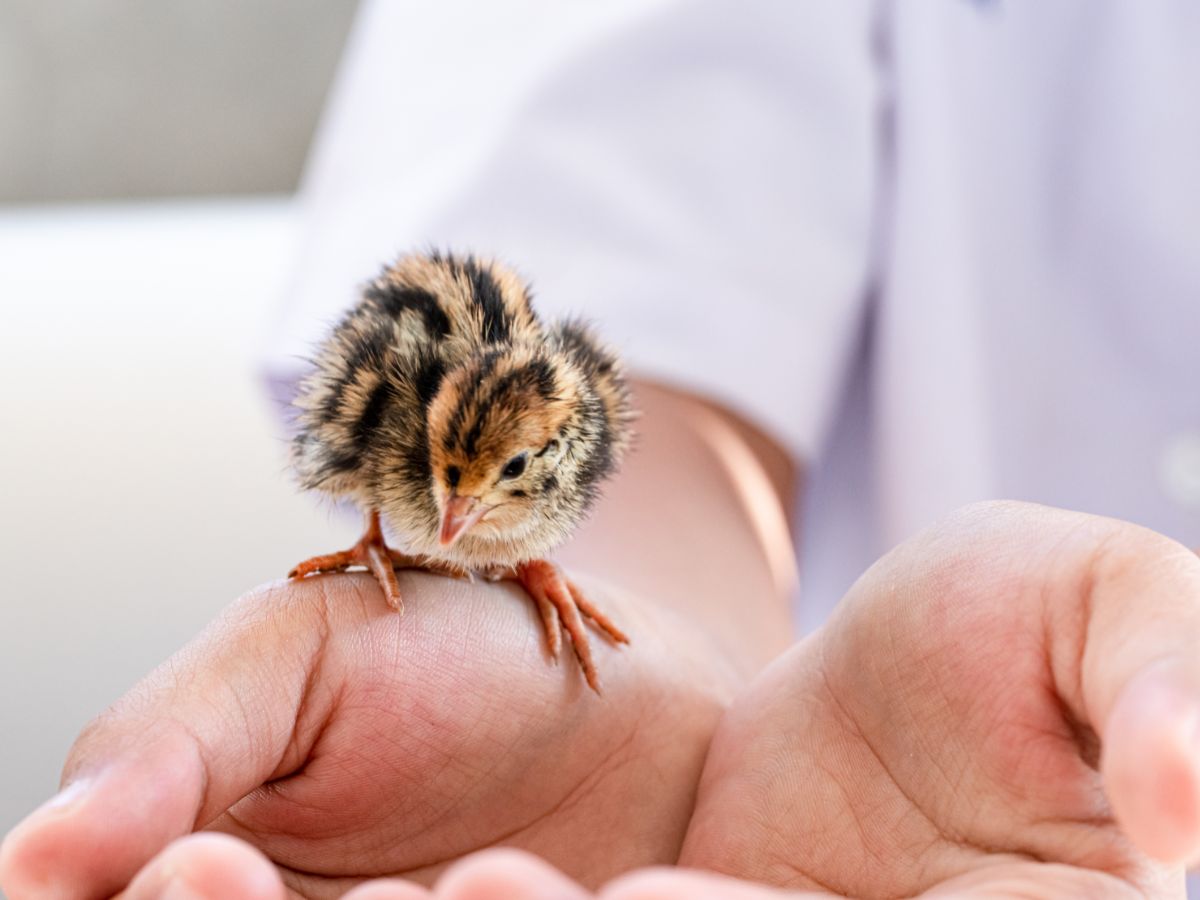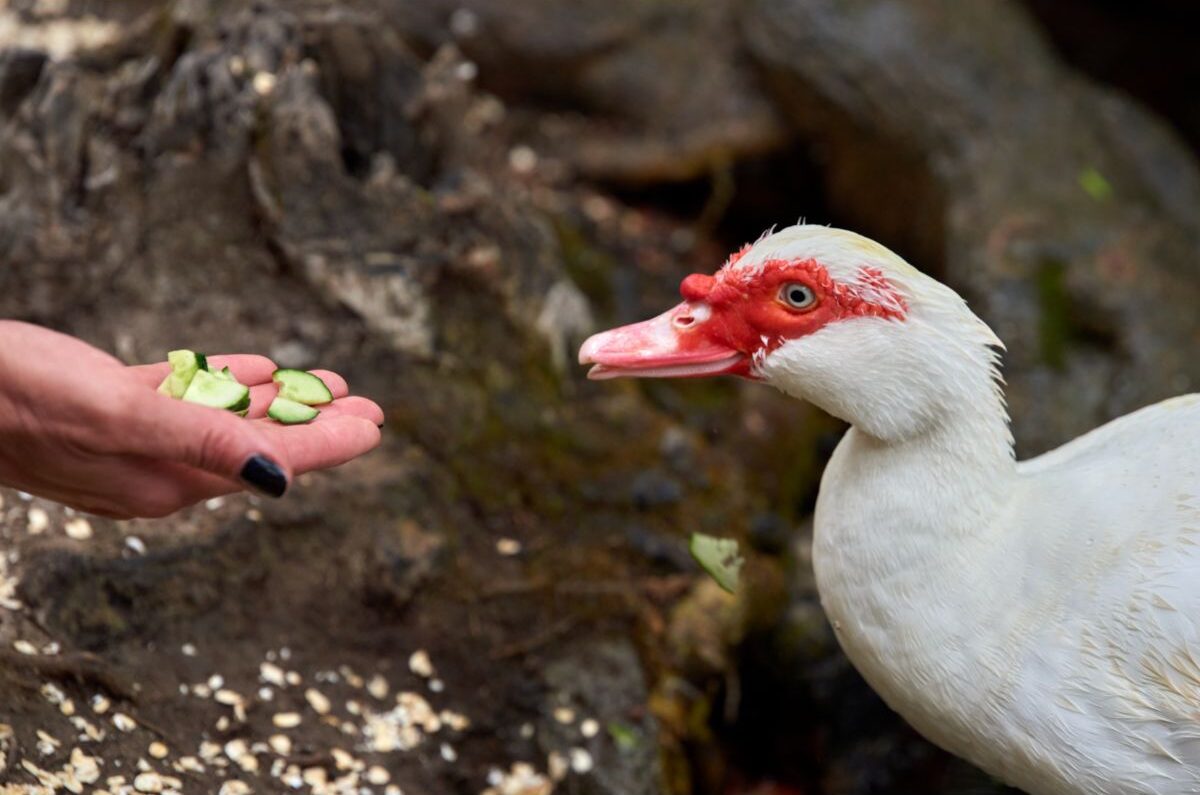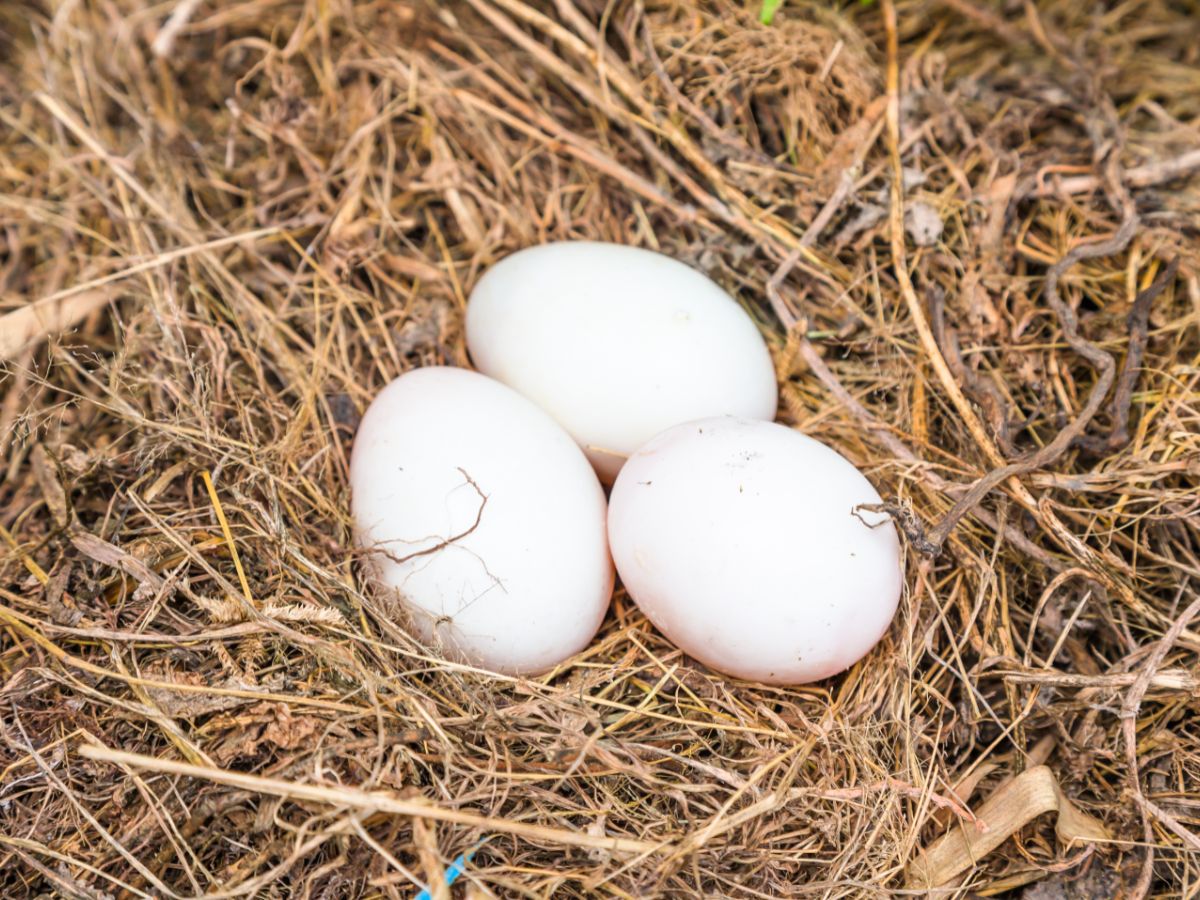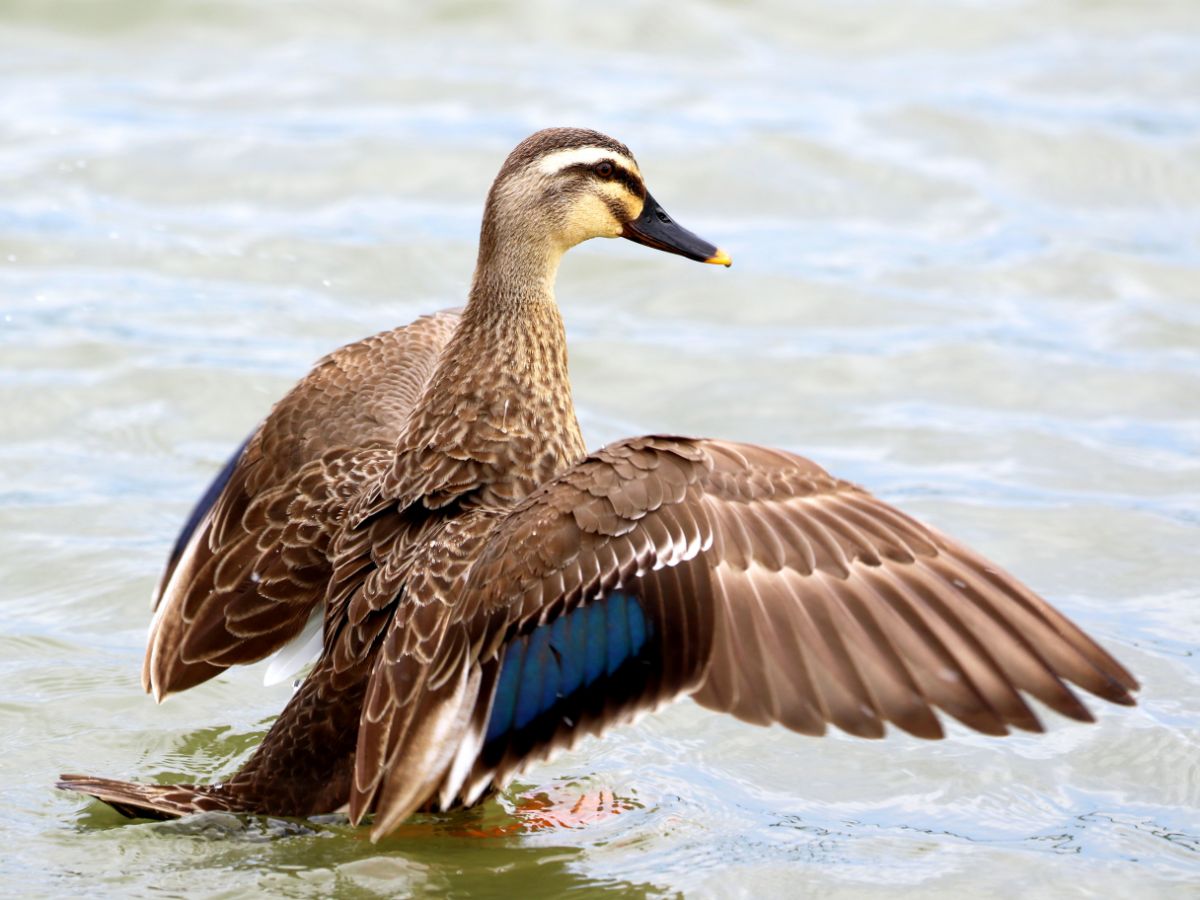Quail are sweet little birds that are a lot of fun to keep. Raising quail and caring for them is very straightforward. If you have experience keeping chickens, raising quail will be a walk in the park. Even people who have no experience keeping poultry can easily learn how to raise a covey of quail.
To raise quail, you need a secure cage or coop with nesting boxes, a feeder and waterer, and a quail run or flight pen if you have the space for one. Quail do well in confined spaces, and some people even keep them indoors. All you need to do is keep their coop clean and collect the eggs daily.
Quail can be raised for their eggs or meat, and some people keep them as pets or for their visual appeal. Quail are also sometimes raised to be released back into the wild. This article tells you all the things you need to get started with quail and explains how to raise quail for whatever purpose you intend.
Contents
What Do You Need To Start Raising Quail?
Before bringing quail home, you will need to prepare the area where you will keep them. If you are buying a covey of adult quail, you will need the following:
- A quail cage or coop. Quail do not need as much space as chickens, so many people keep them in cages instead of coops. Each quail needs roughly two square feet of space inside the cage or coop. The enclosure must be secure to keep predators out.
- Feeder. Quail are messy eaters, so be sure to get them a feeder with small openings so that they cannot scratch their feed out all over their enclosure.
- Waterer. Chicken waterers can be used for quail, or you can use an automatic waterer with a nipple.
- Nesting boxes. Quail hens are not as fussy as chicken hens when it comes to where they lay their eggs. Still, it is good to provide them with a designated nesting area. Whether they use it or not is up to them!
- Bedding. A layer of straw, hay, or wood shavings on the floor of the coop or beneath the cage will absorb the birds’ waste.
- Feed. Quail can be fed unmedicated turkey feed. Until they are around weeks old, they should get starter feed, which is higher in protein. Thereafter, they can be given laying fowl feed if they are being kept for eggs or grower/finisher feed if they are being raised for meat.
- A quail run or flight pen (optional). The more space you can give your quail, the better their quality of life. Quail raised in a cage less than 30 feet long and 12 feet wide will not learn to fly, so you can build a larger flight pen for them if you want them to learn to fly. You can also create a secure outdoor run for them to scratch and forage around in. This is optional, but many people who raise quail as pets like to have a more natural space for them.
If you are planning to buy hatched quail chicks, you will also need a brood box to keep them in for the first ten days.
If you want to buy quail eggs to hatch yourself, you will need an incubator.
Where Can You Get Quail?
You can buy quail from a hatchery. They can send eggs or hatchlings to you via post. Be prepared that some chicks may die in transit, or some eggs may not hatch because they get damaged.
Another option is to get quail from a local breeder or quail enthusiast. It is often best to get quails locally because the birds will be adapted to the climate where you live.

Hatching Quail Eggs
Hatching a clutch of quail eggs is a fun process. The tiny chicks are utterly adorable! It only takes 18 days for quail eggs to hatch.
The process is easy if you have an incubator with a turning rack, humidifier, and temperature controls. You need to set the temperature to 100°F, the humidity to 45 to 50%, and wait.
On day 16, you should turn the humidity in the incubator up to 65 to 70% and switch the egg turner off to help the hatching process.
It is important not to interfere with the eggs or open the incubator while they are hatching. Never try to help the chicks out of the eggs!
Only move the quail chicks to the brood box once they have all hatched.
Raising Quail Chicks In A Brooder
For their first ten days of life, quail chicks should be kept in a brooder. This can simply be a cardboard box with bedding, a heat lamp and thermometer, and a chick feeder and waterer.
The brooder does not need to be large. In a 2×3-foot space, you can keep as many as 100 quail chicks!
For the first week, use paper toweling as the bedding to prevent the baby quail from trying to eat it. Thereafter, use wood shavings, hay, or straw bedding.
Change the bedding regularly as it will absorb all the hatchlings’ waste. Wash the feeder and waterer often. This is important to prevent bacteria and mold, which can make quail chicks sick.
Initially, the temperature in the brooder should be 100°F (the same as the incubator). Lower the temperature by 3 degrees every day until the brood box is at room temperature.
Provide the quail chicks with as much feed as they can eat. The tiny hatchlings need nutrients and protein to fuel their rapid growth.
If you are feeding the baby quails turkey or chick starter, you need to grind the grains up a bit so that they are small enough for the baby quail to eat.
Keep a close eye on the brooder, frequently checking the feeder and waterer as well as the temperature.
You will know when the baby quails are too cold because they huddle together in clusters near the heat lamp. If they are too hot, they tend to stand as far away from the heat lamp as possible.
If the temperature is just right, the baby quails will be evenly distributed in the brooder.
Once the baby quail have a full coat of feathers, they are ready to move out of the brood box into their coop or cage.
How To Care For Quail
Quail are relatively low maintenance compared to chickens. They require very little care on a day-to-day basis.
Caring For Quail Daily
Quail do not need to be fed set amounts of feed twice a day like chickens. All you need to do is keep their feeder full. How often you must refill it depends on the size.
You should check on the water level in the waterer daily to ensure the quail have a supply of fresh drinking water.
Quail hens start laying eggs when they are around 8 weeks old. They lay an egg a day, so you need to collect the eggs daily.
If you want your quail to learn to fly, you can let them out into their flight pen once they are 1 to 2 months old.
Ensure that the quail have access to a dust bath. They clean themselves in the same way that chickens do. Dust baths help to prevent parasites like lice and mites.
Weekly Care For Quail
Depending on the size of the cage or coop and the number of quail you are keeping, you need to change their bedding relatively frequently (at least weekly).
Monthly Care For Quail
On a monthly basis, give the entire cage or coop a deep clean. Scrub it with soapy water and allow it to dry before putting the quail back.
Feeding Quail
As ground-dwelling game birds, quail are avid foragers. They love to scratch around, looking for insects, worms, seeds, and vegetation to eat.
If you can build an outdoor run for your quail to free-range in, do so! It allows them to enjoy their natural behaviors, improving their quality of life.
Alternatively, you can keep quail in a cage or run and provide them with plenty of fowl feed. Quail can eat chicken feed or turkey feed as long as it is unmedicated.
Give quails grains and a variety of fruits and vegetables as treats. Chop them into tiny pieces so that the quail can easily eat them.

Protect Quail From Predators
Quail are small birds that are vulnerable to many different predators. It is crucial for the quail coop, cage, and run to be 100% secure.
Owls, hawks, and eagles will make a quick meal out of a quail. An outdoor quail run should always be covered with poultry netting to prevent aerial predator attacks.
Rats, raccoons, opossums, coyotes, cats, and dogs are a danger to quail. There cannot be any cracks or holes in the coop that rodents can get in through. Ensure that the door latches are sturdy enough to keep larger predators out.
Common Health Issues In Quail
The most common health issues to be aware of with quail are:
- Ulcerative Enteritis, AKA quail disease
- Mites
- Lice
- Tapeworm and roundworm
- Respiratory problems
Good coop hygiene is central to preventing these health problems. It is also wise to quarantine any new birds for a week before adding them to your covey of quail.
Quail Disease
The tell-tale signs of quail disease are drooping wings, diarrhea, and lethargy. The disease is fatal and infectious, so it is important to treat all the birds in the covey as soon as possible. You need to get antibiotics from a vet.
External Parasites
Mites and lice are easy to prevent and treat using diatomaceous earth. Add this to the birds’ bust baths, sprinkle it inside the coop, and use it to dust the quail.
Internal Parasites
Internal parasites, like roundworm and tapeworm, can cause quails’ egg production to slow down. You may also notice that the birds are hungrier than usual and have diarrhea.
You can put some apple cider vinegar into the quails’ water to treat internal parasites naturally, but it is best to seek advice from a vet.
Respiratory Infections
Quail manure is much higher in ammonia than chicken poop, so if the coop is not cleaned regularly enough, the birds will develop respiratory infections.
The signs of this are snotty, sneezing quail that have difficulty breathing and look tired and listless. A respiratory infection can be treated with apple cider vinegar or garlic.
What Are The Easiest Quail To Raise?
If you have no experience keeping quail, a great breed to start with is the Coturnix quail. It is a dual-purpose breed that is kept for meat and eggs, and it is the easiest quail breed to raise.
Other popular quail breeds are Scaled quail, Gambel’s quail, and Bobwhite quail. They are not that much more difficult to raise than Coturnix.
How Many Quails Should You Start With?
Quails are social creatures, so they must never be kept singly, or they will get lonely. The bare minimum number of quails you should start with is two.
Considering that quail hens lay about one egg a day or 230 to 250 annually, you need to decide the number to get based on your household’s demand for eggs.
If your goal is to breed the quail, you should start with one male and two to five females. Never keep two male quail together in a cage because they will fight.
Conclusion
Raising and keeping a covey of quail can be fun and rewarding. If you have all the proper equipment and materials, it is easy to hatch quail eggs and raise the hatchlings yourself. Alternatively, you can get a breeding pair of quails and let nature take its course.
Caring for quails is not very time or labor-intensive. Their day-to-day care is simpler than for chickens because they do not need to be fed on a schedule. All you need to do is keep their living quarters clean, their waterer and feeder filled, and collect the eggs.




